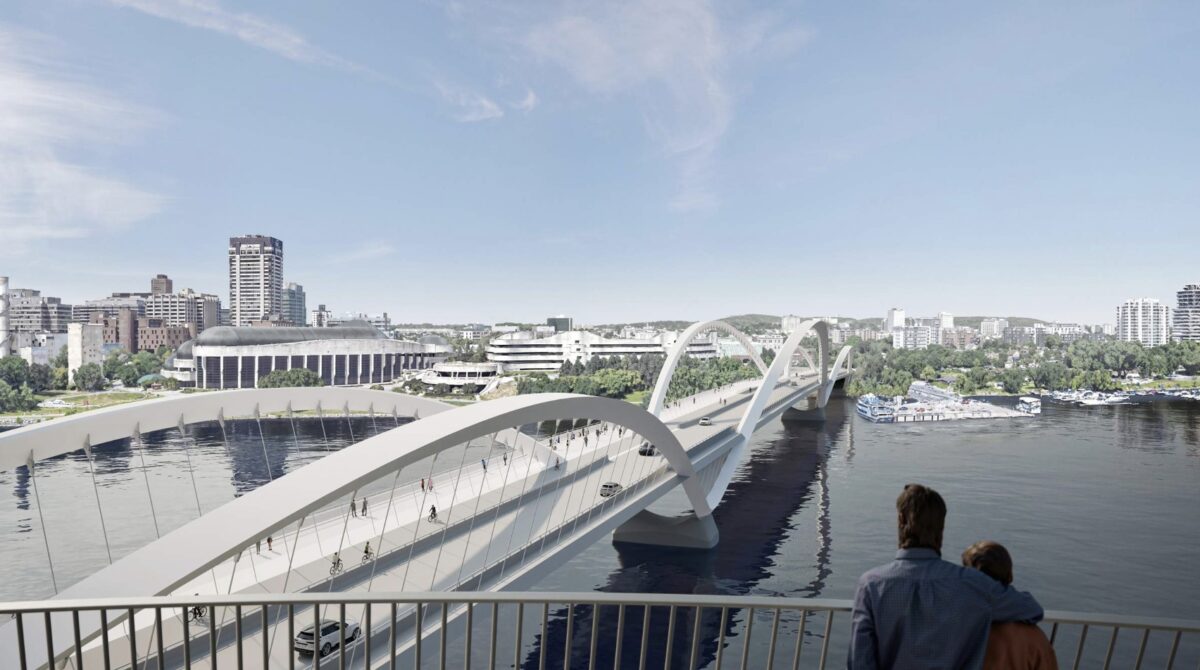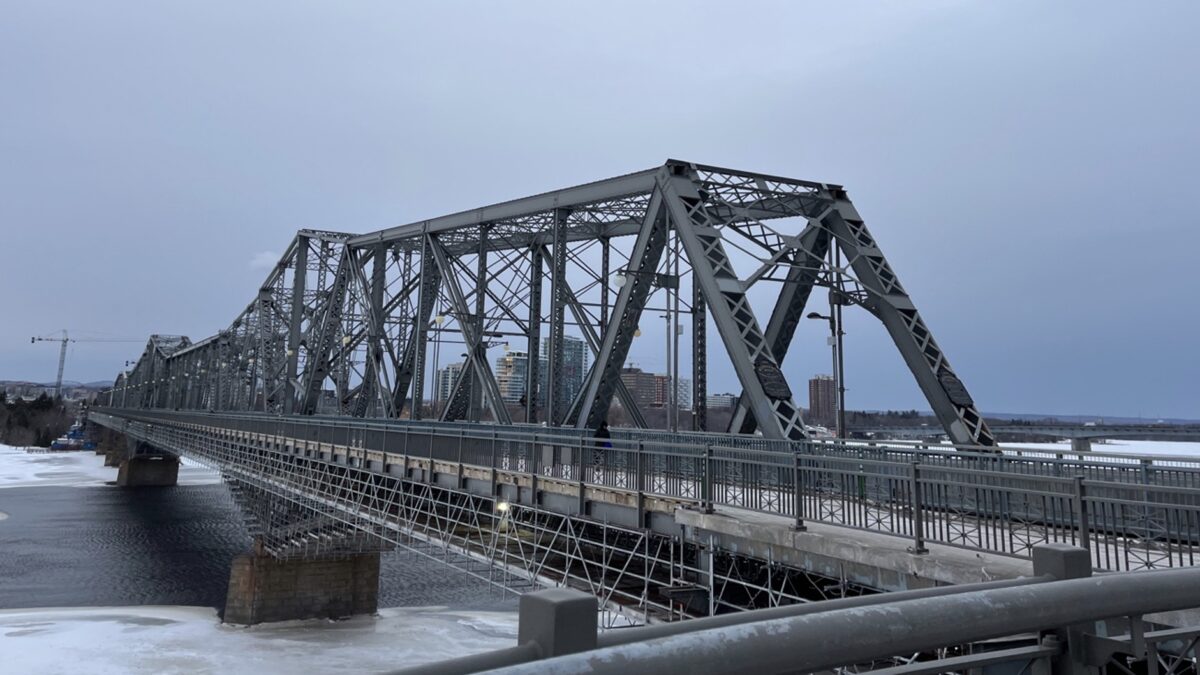The National Capital Commission and the federal public works department have chosen a design called “Motion” to replace the Alexandra Bridge within seven years.
The Alexandra Bridge has been an Ottawa landmark for more than 120 years. It has been a vital link between Ottawa and Gatineau for commuters, pedestrians and cyclists alike.
But the interprovincial crossing has reached the end of its lifespan and — despite objections from Heritage Ottawa, which has argued the bridge should be rehabilitated for active transportation — has been slated for replacement by the federal government.
The new bridge, expected to enter its construction stage in 2028, will provide better access for residents on both sides of the Ottawa River, the NCC says.
The board of directors of the National Capital Commission, which is overseeing the bridge project with the federal government’s Public Service and Procurement Canada, unveiled the chosen design for the new bridge in January.
Its design features two lanes for vehicles, along with a dedicated cycleway and a clear separation for a pedestrian walkway. To accommodate future transit options, the bridge will be wider than the current bridge.

The bridge, which accommodates 40 per cent of all pedestrians and cyclists — or about 9,000 people — who cross the Ottawa River every day, will include safe rest points and. The widening and separate space for pedestrians is expected to make the new bridge much safer.
Christopher Meek, an urban planner with the NCC, says that “based on the current project schedule, it is anticipated that the presentation for approval of the 100-per-cent developed design will be made in 2028 to allow construction to proceed.”
Tobi Nussbaum, CEO of the NCC, said that the board had received 7,000 responses from the public during a months-long consultation focused on three potential designs of the future bridge.
The design that was chosen is inspired by the American eel — an endangered species that’s native to the Ottawa River and an important part of the culture of the Algonquin Anishinaabe people whose unceded traditional territory encompasses the Ottawa Valley along both sides of the river.
Norm Odjick, director general of the Algonquin Anishinabeg Nation Tribal Council and a member of the NCC’s executive council, said at the meeting that he “can’t wait for the general public to see the view when we do open it up and to see the amount of work that has gone into (the bridge).”
The bridge design includes one main arch and two secondary arches, allowing for largely unobstructed views of the capital’s skyline and what the NCC describes as a more aesthetic style.
The new bridge also aims to optimize health and safety, while allowing for less vehicular traffic overall, the NCC says. The federal agency also plans to commemorate the existing 124-year-old Alexandra Bridge and collaborate with heritage specialists to preserve its legacy.
A key goal of the new bridge is to promote sustainability, including the use of materials that have a smaller environmental footprint than the original bridge. The plan is to use materials that will keep the new bridge in operation for another century.
Lighting on the bridge will also be installed to match the surrounding landscapes, with amber tones that don’t take too much attention away from the capital’s primary architectural features, such as Parliament Hill.
The more open new bridge will allow for a better view of the river and more space along the shore, much of which is unusable because of the present bridge.




